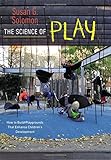The science of play : how to build playgrounds that enhance children's development / Susan G. Solomon.
Material type: TextPublisher: Hanover : University Press of New England, [2014]Description: xii, 208 pages ; 27 cmISBN:
TextPublisher: Hanover : University Press of New England, [2014]Description: xii, 208 pages ; 27 cmISBN: - 9781611686104
- 1611686105
- GV425 .S66 2014
| Item type | Current library | Call number | Status | Date due | Barcode | Item holds | |
|---|---|---|---|---|---|---|---|
| Lending Books | Elisabeth C. Miller Library Parent/Teacher Resource Collection | SB473.5 .S65 2014 (Browse shelf(Opens below)) | Available | 39352800173445 |
Browsing Elisabeth C. Miller Library shelves, Shelving location: Parent/Teacher Resource Collection Close shelf browser (Hides shelf browser)

|
No cover image available |

|

|

|

|

|
||
| SB464 .W55 2006 Education for sustainable development : guidelines for action in botanic gardens / | SB470.54.P23 H57 1975 A visual inventory of buildings & urban design resources for Seattle, Washington : commenced in 1975 / | SB473.5 .J64 2006 Playsets : ideas and plans for play structures / | SB473.5 .S65 2014 The science of play : how to build playgrounds that enhance children's development / | SB473.5 .S85 1997 Landscapes for learning : creating outdoor environments for children and youth / | SB473.5 .S86 1998 Children's play areas / | SB611 .B47 1976 Common weeds : coloring book / |
Includes bibliographical references (pages 191-201) and index.
The problem -- Risk and independence -- Failing and succeeding -- Executive function -- Friendship -- Nature and exploration -- Paths -- Conclusion : paradigms.
Well-written and insightful, this book starts with known elements of children's need for play (including challenge, purpose, independence, nature exploration, and friendship) and makes design recommendations for innovate, sustainable, welcoming playgrounds. (Miller Library Staff)
Poor design and wasted funding characterize today's American playgrounds. A range of factors - including a litigious cuulture, overzealous safety guidelines, and an ethos of risk aversion -- have created uniform and unimaginative playgrounds. These places fail to nurture the development of children or promote playgrounds as an active component in enlivening community space. This book demonstrates how to alter the status quo by allying data with design.
